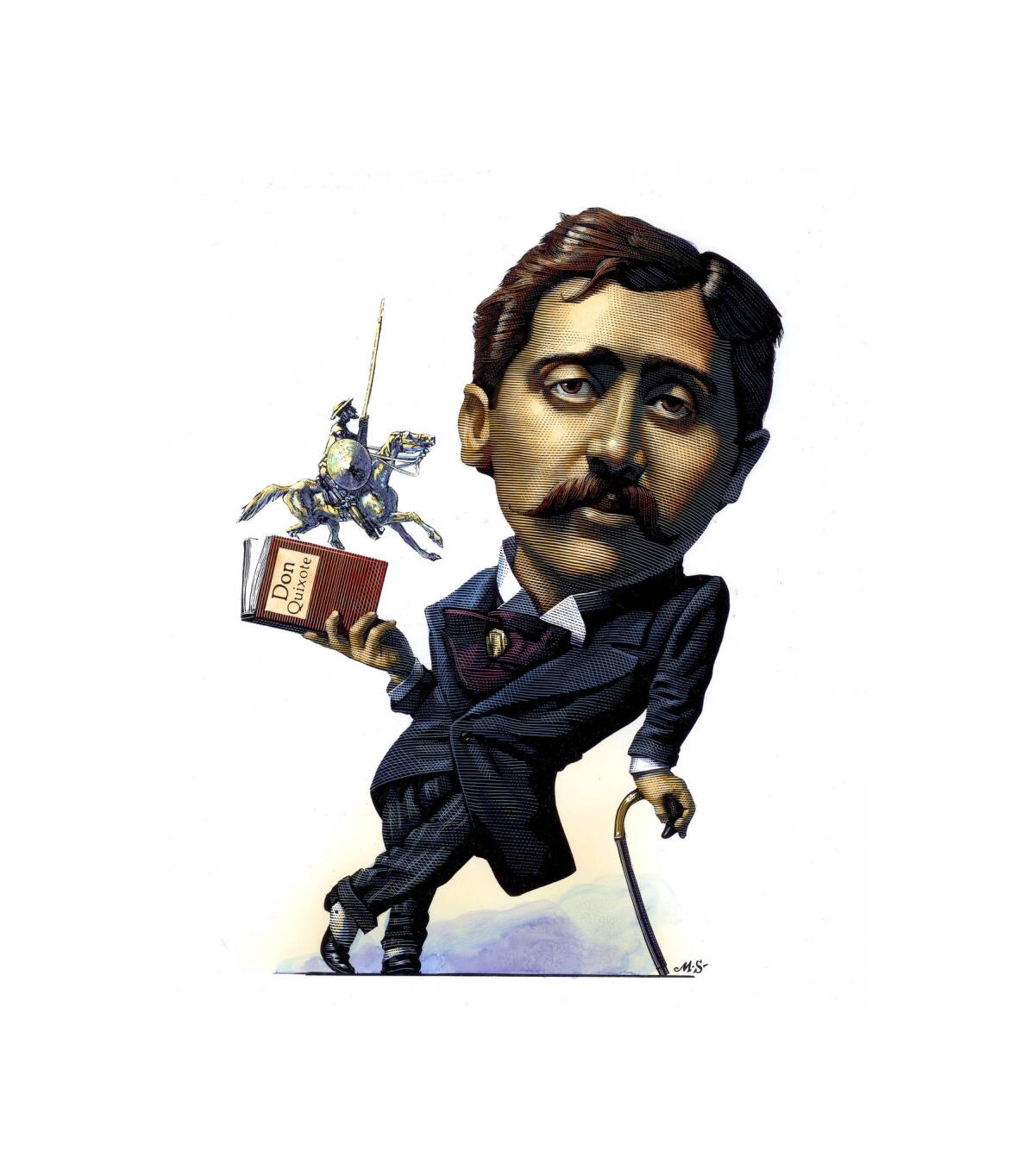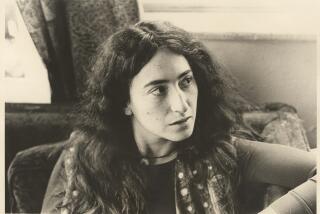Searching for Proust in his papers -- and finding his mother

A mother looms over the narrator — figuratively and literally — in Marcel Proust’s masterpiece, the seven-volume novel “In Search of Lost Time.” Not that it’s a big surprise, but thanks to an exhibit at the Morgan Library and Museum in New York, we now know that a similarly dominant mother figure loomed over Proust in real life.
Proust’s mother, who was Jewish, is by all accounts one of the stars of the Morgan Library exhibit, which opened this month. The exhibit includes the author’s notebooks, preliminary drafts, galley proofs and other documents.
A photograph of Madame Proust seated next to her two sons (Marcel and his brother Robert) greets the visitor.
Colm Tóibín describes that picture in a wonderful piece on the exhibit in the New York Review of Books, saying the image of Madame Proust sends “a shiver down your spine.”
Madame Proust was determined to keep her sons in line, Tóibín writes. In one of her letters to the young Marcel when he is in 20s and living away from Paris she demands to know very specific details of his daily life. “She is concerned about what time he goes to bed and what time he rises,” Tóibín writes. “Her letter is a demand for precise information. So she writes Couche and leaves a blank for him to fill in and then Leve and leaves another blank.”
It doesn’t take too much imagination to realize that, in a sense, all of Proust’s work can be read as an answer to the question posed by his mother: What did you do today?
The exhibit commemorates the 100th anniversary of the publication of the first volume of the novel, “Swann’s Way,” in 1913. And it offers ample proof of the assiduous daily rhythms of Proust’s work on his masterpiece, writes Diane Cole in another retrospective in the New York Jewish Week.
The documents on display, she says, “make it clear that this monumental undertaking was written one word, phrase and page at a time. And also re-written, again and again. Numerous passages have been crossed-out, replacements and additions fill the margins and those additions are themselves subject to more cross-outs and additions.”
The question of Proust’s Jewish heritage is never explicitly referred to in the documents on display, Cole writes, though Jewish identity is a topic that comes up early in “Swann’s Way.”
Proust was baptized and raised Catholic. But his mother, Jeanne Weil Proust, was born into an assimilated Jewish family, “and its observance of Jewish ritual was probably limited to the High Holy Days as well as Jewish burial and mourning customs,” Cole writes. “And though she intermarried, she never converted, and always remained close to her Jewish family.”
The Morgan Library exhibit runs through April 28.
hector.tobar@latimes.com
ALSO:
Waiting for Thomas Pynchon’s ‘Bleeding Edge’
Junot Diaz lands on shortlist for $45,000 short story prize
More to Read
Sign up for our Book Club newsletter
Get the latest news, events and more from the Los Angeles Times Book Club, and help us get L.A. reading and talking.
You may occasionally receive promotional content from the Los Angeles Times.






